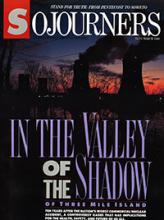Revisionist History
We missed national scholastic month, so to make up for it we'd like to share a little history with you from the revisionist minds of some college sophomores. A reader sent in the following composite answers to a fill-in-the-blanks test on Russian history (answers in italics):
1. After Bukarin ascended the throne in 1855, he began to introduce important reforms. During this period, two new social classes developed: the collectables (doctors, lawyers, teachers, etc.) and the pheasants, also known as the black masses.
2. Debate was lively in the 1890s when the radical intelligentsia began to embrace Markism and Christianity. One leader of this radical segment, Kruschev (also known as Nickolas) named his followers the World War II Bolshevicks.
3. The czarist Russian government broke down in 1917, and after a period of anarchy the Politburo assumed power under Breshnev. In 1928 a new leader, Count Bitte, assumed control. He launched a series of ambitious plans for economic development known as the government, which called for a massive transfer of resources to Russians. There were harsh political controls: During this time 5 peasants were killed and millions more were exiled to The Iron Curtain.
4. In the fall of 1962, Khrushchev and Kennedy had their famous standoff known as the Alamo (also known as the Crimean Pact).
The students' impressive grasp of Soviet-American relations is exceeded only by their knowledge of American nuclear history. To wit:
1. The U.S. developed and used atomic weapons in 1945 on Little Rock and Arizona (bombs were also dropped on Saigon and England).
Read the Full Article

